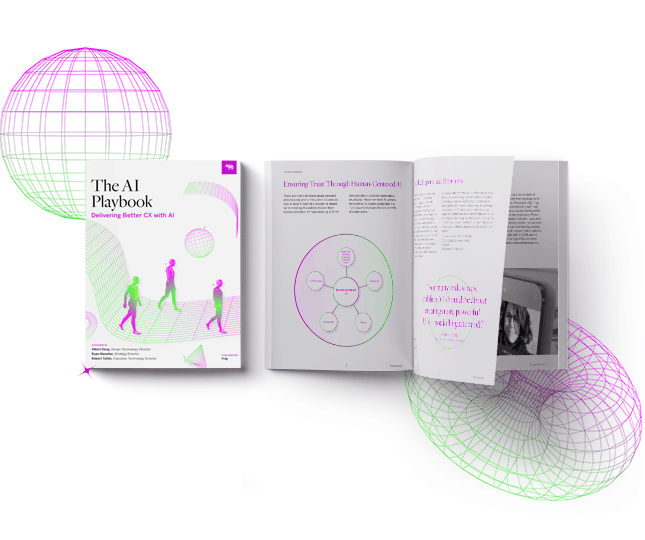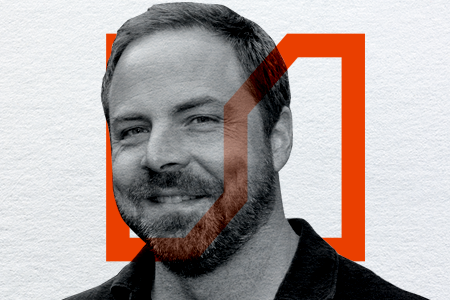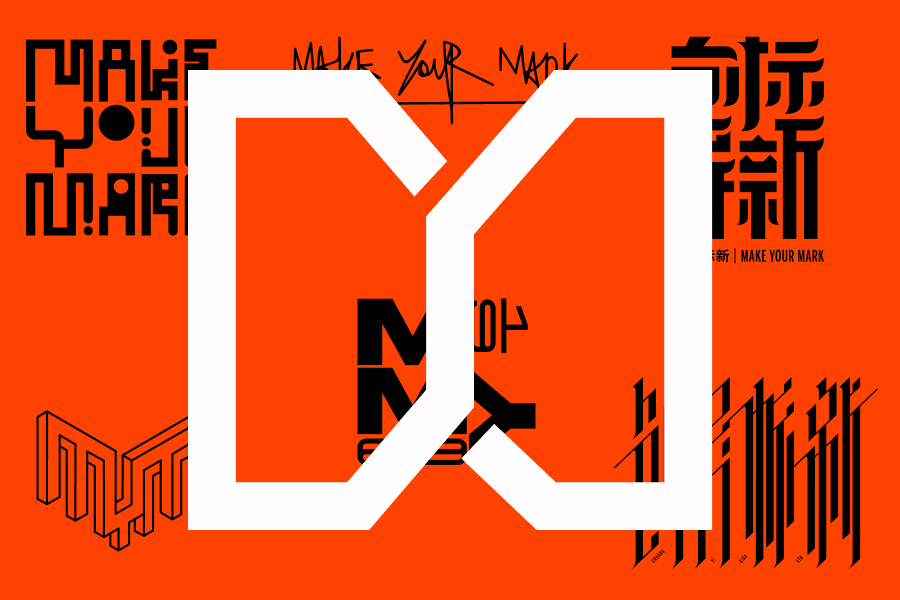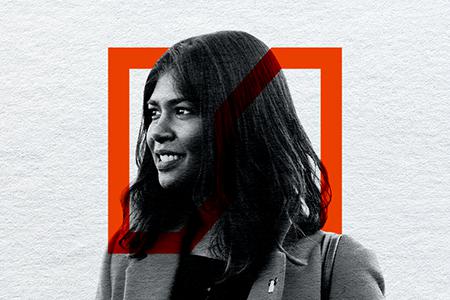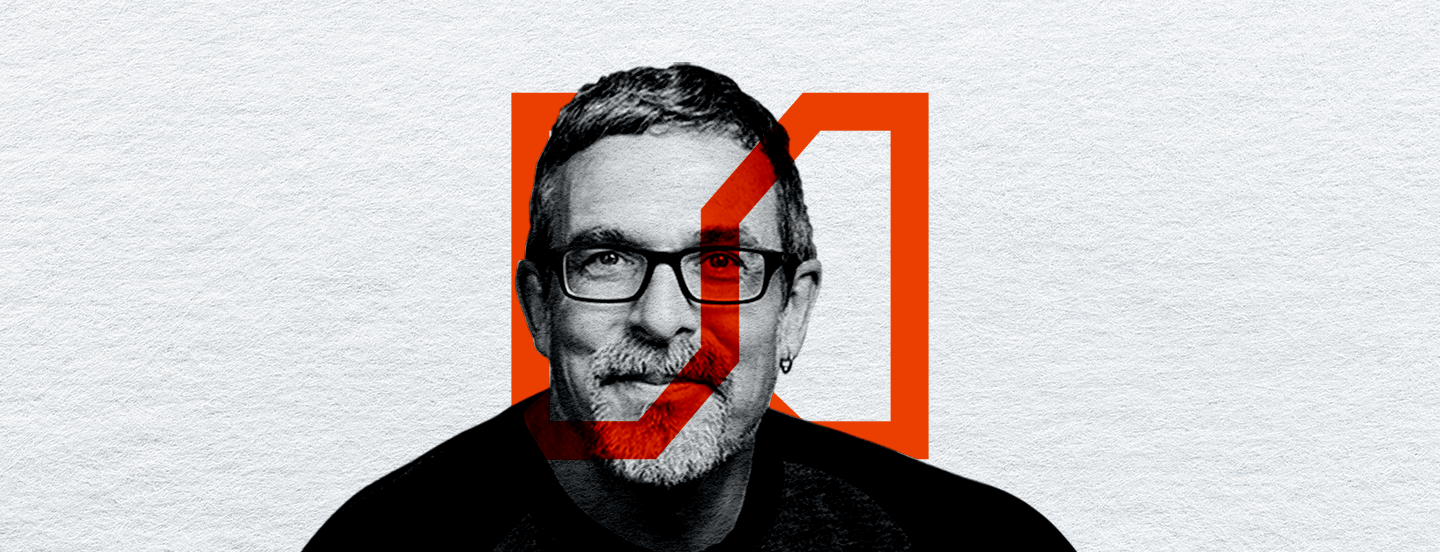
打造设计经济
On this episode of the Design Mind frogcast, frog President Andy Zimmerman and Justin Maguire, CDO, Salesforce, talk about the state of design leadership today and how to build design economies that support the “relationship trifecta.”
Today, Justin is Chief Design Officer at the CRM and Cloud-computing giant Salesforce, but for years he led creative teams at frog, first helping to launch the Seattle studio, and later bringing his lifelong passion for design to frog’s Munich location. Recently, Andy and Justin sat down to talk building design economies in 2021 and beyond, as well as the importance of making the business case for creative thinking. Justin also shares how he’s leading Salesforce into a new era of design built on relationships between people, products and the planet.
Listen to the episode and see transcripts below.
Episode Transcript:
Design Mind frogcast
Building Design Economies: A Conversation with frog President Andy Zimmerman and Justin Maguire, CDO, Salesforce
Episode 5
[01:05]
Andy Zimmerman, President, frog (AZ)
Justin, I’m very excited about this opportunity to have a conversation with you about design. You have such a wonderful point of view from both your past lives in the software business, now running design at Salesforce, and of course, the time you spent with us at frog. So why don’t we start with where you are currently at Salesforce? What is the current initiative that you’re most excited about?
[01:25]
Justin Maguire, CDO, Salesforce (JM)
Well, first, just thanks for having me on here, Andy. It’s a pleasure to join you again. You know, my current role is the Chief Design Officer at Salesforce. Our biggest focus is what we refer to as building the design economy. Salesforce takes great pride in having helped build an economy around its platform. We often express those in terms of roles. So there’s an admin economy, and we’ve created so many jobs for administrators and all the things around that, from communities, to events, to thought leadership, to certifications, and curriculum, and to jobs. And we’ve done that for admins. We’ve done that for developers. We are in the process of building the design economy. We’re shaping a point of view for Salesforce around design—we call that ‘Relationship Design’. Under that, we are building curriculum, certification, community, events. And ideally, you know, we have an aspiration to create, you know, 100,000 jobs.
[02:21]
AZ: I don’t know if listeners are aware of how embedded design is in everything that Salesforce does. Your company is certainly a leader in this space. In fact, people may not realize it, but I think, Justin, you actually have more designers in your group than we have frogs around the world—just to give people a sense of the scale at which you are operating as a chief designer. Maybe we can start out with what you see as some of the social and technology trends out there that you think will have an impact on the design industry over the next five years.
[02:48]
JM: I think that people are making purchase decisions grounded in a company’s ethics. And customers are making choices about what companies they want to have a relationship with—and that’s predicated on their ethical stance. That trend’s been going on for some time, but we’ve really reached an inflection point where that’s very present. How companies take a stand on social, environmental good is also important. It’s as important to their ability to attract talent to work for them as it is for people being willing to buy their products.
[03:20]
JM: We see the rise of hyper-personalization. That’s powered by artificial intelligence. There’s a lot of changes in tooling and infrastructure that enable us to move away from sort of a persona-driven product development process where people are still sort of clustered into types, or personas, to being able to deliver a completely bespoke experience to every human uniquely. And in lockstep with that, I think, you know, with a phone in every person’s hand, a communication device in every person’s hand, we see the rise of an engaged and conversant relationship between customers and the companies that serve them. That creates an expectation that they’re being heard and responded to. And those lessons from that conversation are what should be driving that personalization.
[04:10]
AZ: More recently, you’ve been talking about Relationship Design, which I think is a very interesting and innovative concept, and kind of a natural evolution of that Human-Centered Design ethos. So I just wonder if you could talk a little bit about what you mean by Relationship Design and what you’re doing in that area.
[04:26]
JM: You know, I think we all grew up, or at least, I grew up in a time where we did and practiced product design. When we finished building it, it was complete. We sold that thing, and that business was measured in transactional revenue, right? It was a purely transactional relationship. ‘I sold you a thing I never talked to you again.’ We’ve lived through a time already where we saw the rise of a new thing called service design. And service design is really the creation of multi-touch point experiences over time and the systems that deliver those experiences. In addition to revenue, you’re measuring adoption. And now I think we are at the dawn of a new practice. And so we see Relationship Design as the creation of experiences that focus on the connections that drive deep engagement and creating social and economic value—the connections between all the points of an ecosystem. And so, in addition to revenue and adoption, you now measure engagement as a key metric.
[05:24]
AZ: What you’re talking about is much more than just the relationship between a company and a customer or a company and their employees. That’s part of it. But what you’re really talking about is co-designing with communities, with other partners, with other product/service companies—experiences that almost ignore the boundaries that you have between Salesforce and other people, potentially even competitors. So the experience that you’re creating will draw in different kinds of products and services that may not be owned or operated by Salesforce. Is that the case?
[06:01]
JM: We absolutely see that and I would say we go a step further. We sort of talk about the relationship trifecta—that you’re designing the relationship between people, between product and between planet. Those three things inform what we do. And we don’t see ourselves doing that alone in a corner, right? That’s at a scale of impact where we necessarily and appropriately should be doing that with partners. Because, you know, I don’t know that Salesforce has the lock on what it means to be stewards of our planet. Design has always been a highly collaborative activity. Really, I think we see this as just an expansion of who is a designer at the table with us.
[06:42]
AZ: Justin, I think you have this kind of perfect situation running Chief Design Officer at Salesforce, where you have a leader like Marc Benioff, who really well before the idea of purposeful business became kind of a ‘trend’, if you will, the newest buzzword, Mark has always been doing that. And he’s been a leader from day one. One of the ideas I found particularly interesting in your view on Relationship Design is the idea of ethics, how inclusivity is very important in Relationship Design. And I wonder if you could talk a little bit about that. Because, you know, as a global company and being multicultural, both Salesforce and frog for that matter, sometimes one person’s ethics is another person’s problem or disagreement. So how do you lead design and Salesforce and incorporate an ethical point of view, when in fact, it isn’t always clear what ethical behavior is?
[07:32]
JM: I know I certainly didn’t go to school to be an ethicist. And yet, design organizations are being called upon to help shape and to help lead the formation of a point of view around this. And I’m using those words with great intention. I think it starts with listening. It starts with a recognition and a belief that values create value, as Mark would say. Understanding and grounding a company in its values and what stances it wants to take, that’s a unique decision for every company. The days where you don’t get to take a stand are kind of over.
[08:07]
JM: Companies are recognizing that their values are actually really central to who they are. In a world of connected social customers, if you aren’t living your values, you will be called out on that. And so how your values give expression to ethics is a conversation I think happening in the boardroom of every company. No one has the right answer here, to be clear, right? This is uncharted territory for almost all companies. But I know when we took this on at Salesforce, Mark basically said, ‘Look, yes, this is complex. Yes, this will be hard. Yes, there’s no roadmap for how to do this. Customers expect us to be taking this on. They expect us to be acting in this way. That’s an unstoppable train headed towards us. So we can either be run over by this train, or we can start doing the work to figure out what our answer to this is.’
[09:00]
AZ: Justin, you’ve worked in some big software companies like Microsoft, obviously the leader in the SaaS space with Salesforce and CRM. You’ve worked at frog on the consulting side of design. What’s different about being in a company where you’re running a design group, versus being in a consulting firm like frog where you’re working for clients? And what did you learn from these different experiences? And what are you learning today?
[09:22]
JM: We are products of our environment, and I’ve had the great privilege of three times in my life working for world-class companies: Microsoft, frog, Salesforce. I would not be who I am today as a leader and as a designer without those influences. You know, some people are, I think, wired for being in-house. Some people are wired for being on the consulting side. Regardless of your wiring, I think it’s just as we might advise people that traveling is the fastest, best way to develop empathy and perspective, working on both sides of that is the fastest way to mature and make yourself a more well-rounded designer.
[10:02]
JM: Being at frog, I had the great privilege to think in an often hugely transformative and five-to-seven year time window. And you are often brought in as an instigator, as someone who can help reframe, challenge perspective, and I think partially drive them to deliver on those things. I think one of frog’s unique traits as a consultancy is its desire to not simply hand off a presentation, but to see things through to market—to have that impact. But sometimes impact is shaping an opinion. And so there’s also times where the value that’s being created and helping the senior leadership at a company think, you know, five-to-seven years out is shaping how they are going to take their company over the next five-to-seven years—not necessarily the product they’re going to build next year.
[11:40]
AZ: I don’t know if many people listening know that your father was a designer. Obviously, it’s got to be one of the reasons you got into design. My father was a carpenter and I don’t think he even understands what I do right now. But to have a relationship with someone who’s also a craftsman and practitioner, was that helpful to you? Does it create some interesting conversations around the coffee table? How does that work?
[12:05]
JM: Absolutely. I mean, my father was arguably just after the very first generation. I mean, he worked for Dreyfuss and Louis. And I can remember going with him to the Dreyfuss offices in New York and seeing models of the Trimline telephone and crawling around mockups of Lear jets and Freightliner trucks. He’d set me up with piles of hot modeling clay and markers to draw. But really, I would say from my father I learned, what he stoked in me, was a curiosity to make things better. And about people—he has such wonderful intrinsic, humanistic empathy for others. He is not wired to walk through the world and do anything but see how something might be made better.
[12:53]
JM: Is there anything you might have taught your father about design? Does it go both ways? Are there things that he learned from you in terms of your design career, and given his background as a designer?
[13:05]
AZ: You know, I think sometimes what we teach people or what we focus on teaching others is the thing we were not so good at ourselves. So I think, you know, my father, whether he knew it or not, gave me the courage he never had. And so I think I’ve shown him what adding courage to the humanism and the care for craft and the desire to make the world a better place, how that’s been able to have a greater impact. And I think he’s taken that courage to heart, I’ve seen him reflect on that, to me personally.
[13:41]
AZ: I know, this is a very hard question for someone like yourself, Justin, maybe an unfair question. But could you talk about whether or not it made it into the real world, what’s the one thing you’ve designed that you’re most proud of? Maybe you’re allowed to have more than one.
[13:57]
JM: I’ll give you two because one made it to the world and one sort of didn’t. So the made it to the world one is all of the nuances around formula-building in Microsoft Excel. The inline helping that you receive when writing a formula that eventually was picked up by developer tools. Every IDE [Integrated Development Environment] on the planet now provides that kind of inline structured assistance in writing code. The scale of impact and the shaping the way people work, that’s something I’m extremely proud of.
[14:30]
JM: The other would be the work I did for Unify when at frog. You know, I was asked by the CEO and the original conversations to help them redesign a desk phone. And I told him we were going to change this company. And that led to an almost three-year-long engagement with them, where by the end, you know, I was invited by unify to participate in board meetings as an outsider. That’s, you know, that was an extraordinary relationship. And the work we did there in terms of building the relationship with them, helping them reshape. I mean, we were writing job descriptions and training up their own internal teams with frogs, and then handing them off inside to shape them into a software company. Changing culture, designing the product itself, changing the mindset of the executive team. I’m extremely proud of that work and yet, in the end, it never quite hit escape velocity. We couldn’t get them there fast enough. And so it’s a story of what might have been very much embodied by Slack. I mean that product was Slack before Slack. And so I’m both very proud of the work and I also have sort of deep heartache that it was not quite as impactful as it should have been.
[15:43]
AZ: Could you talk about something you’re particularly proud of during your time at frog and talk about why you’re proud of it?
[15:52]
JM: Well, Andy, I’d have to go back to my entry into frog, which was part of a small leadership team to build a new studio in Seattle. The chance to leverage a world-class brand, that allowed us to attract talent that just some random design studio startup would never have been able to attract, but to still shape a culture was a great privilege. Everything from making sure that we were hiring gender equally across all levels. When trying to build a creative studio, the worst thing you can do is have 100 of the same people, right? You want difference. You want perspective. You want those passions.
[16:33]
AZ: Justin, I think you and I have had a number of conversations while you were at frog about the importance of business value for design, and even our founder Hartmut used to say it’s not about beautiful design, it’s about designing things that people actually use. I think at frog, we’ve gotten pretty religious about the idea of being able to quantify to the extent possible, the kind of business outcomes that are realized with the products and services that we design. It’s not really about, you know, this is a fun thing ‘design thinking,’ you know? With Post-its, people wearing blue jeans and putting Post-its on the board. It’s really about the business value of design.
[17:07]
JM: I look at a data-centric world in which we have such unbelievable ability to measure outcomes. And yet, shockingly, so few companies do or they only measure shareholder value. And they don’t start to think about in the modern world where we have to think about both shareholder and stakeholder value. How do we actually create constructs and business measures and hold accountability for those measures to drive the right behavior? I mean, it’s an old adage, but it’s absolutely true: ‘Behaviors follow incentives.’ And if you’re only measured on the almighty dollar, I think we’ve seen the the negative outcomes of that kind of behavior in the business world and the backlash to companies and Wall Street there. How do we start to help companies build constructs where we can measure the business value, both shareholder and stakeholder business value of design’s impact? Because the fact of the matter is, doing the right thing, investing in design is both investing in headcount—in human capital—and also time. It takes time to do the right thing. And both of those represent investments for companies to make. And if we can’t actually articulate on the stakeholder and shareholder value of that investment, then shame on us.
[18:11]
AZ: Over the last five decades as you know, Justin, frogs around the world have collaborated with passionate leaders—people like Steve Jobs, Michael Dell, and others—visionary entrepreneurs looking to launch new businesses, companies looking to create new magical customer experiences and bring new ideas to life. We’re engaged in a series of initiatives around how to make your mark in the design community and in the world at-large. One aspect of the program that we really cherish and want to represent is the great work of frog alumni. What impact do you hope to have in your current role?
[18:50]
JM: I hope to help shape Salesforce’s approach to embedding Relationship Design into both our customer base—into the world—and into how the company operates itself.
[19:02]
AZ: How do you feel you’re driving change in your industry?
[19:08]
JM: By hiring the smartest people I can and surrounding myself with them and then empowering them to help me drive that. Change is not a solo effort. It’s a team sport. And the scope of change that I think Salesforce and certainly myself would hope to have isn’t small and it’s therefore nothing I can do alone.
[19:24]
AZ: How will you know, Justin, that you’ve made your mark in the world?
[19:30]
JM: When you ask that question, my intrinsic, instinctual response to that is that I’ve shaped an organization that no longer needs me. It’s when I’ve built an organization with leadership and depth, where we have operationalized our values like inclusive design, designing for ethics, designing for relationships—where those things are intrinsic into how we operate as an organization. Where the faces of that organization represent the diversity of the world. They don’t look like me.
[20:00]
AZ: Justin, do you have any advice for junior designers who are just starting out today, whether they’re in school or coming out of school looking for their first job? What advice do you have for them?
[20:12]
JM: I would tell a junior designer that the first couple of years out of school are really continuing education. And just like the relationships you build in school you sort of carry with you the rest of your life, the early professional relationships you build are meaningful and will stay with you. Take those first few years. Explore. Take different jobs. Don’t be worried about titles. There aren’t actually that many levels per se in a design career. The reality is, the height you go is predicated—just like a pyramid—on the breadth of your base. The first few years out of school, you should be focused on building your base. Learn everything you can. Surround yourself with the smartest people across all disciplines. The better you are at partnering across discipline walls, and the stronger a sense of what they bring to the table, the more empathy you’ll have, the more senior you become, and the more trusted you’ll be seen as being able to collaborate across those discipline walls, which is one of the things that’s so necessary at the highest levels of the profession.
We want to sincerely thank Justin Maguire, CDO, Salesforce and frog President Andy Zimmerman for sharing their perspectives on design leadership in a changing world. Subscribe to the Design Mind frogcast wherever you listen to podcasts, including Apple Podcasts and Spotify. And if you have any thoughts about the show, we’d love to hear from you. Reach out at frog.marketing@frog.co.

